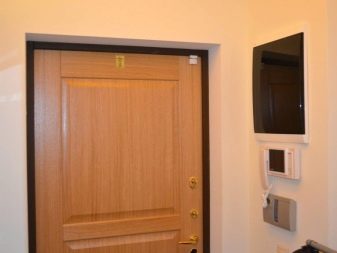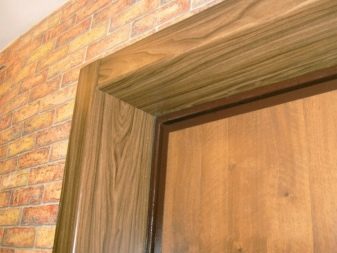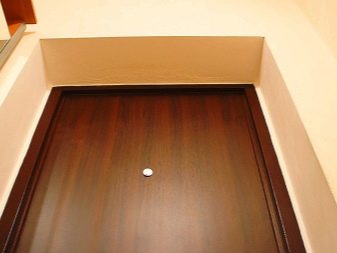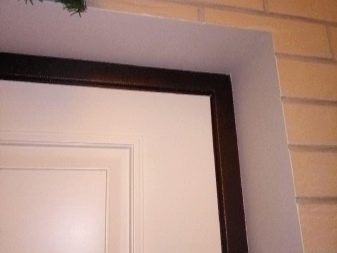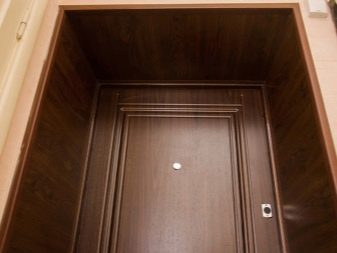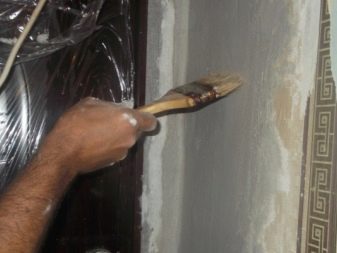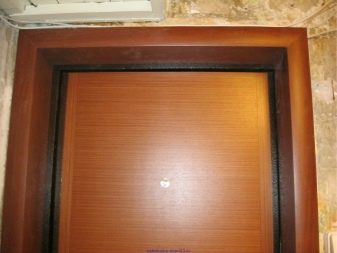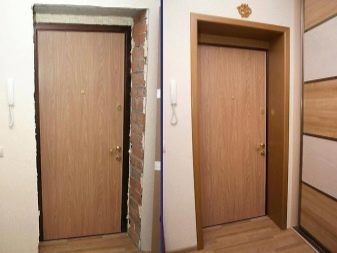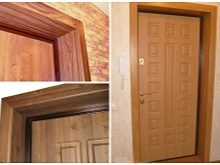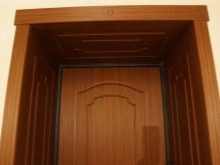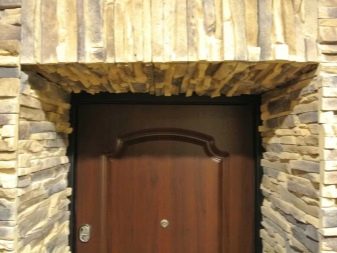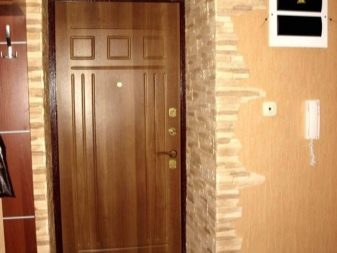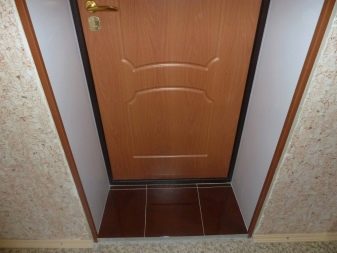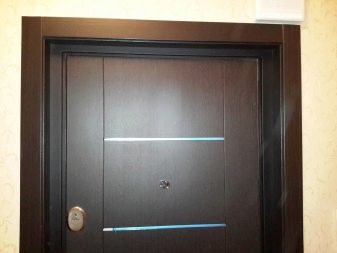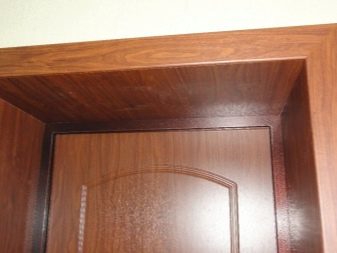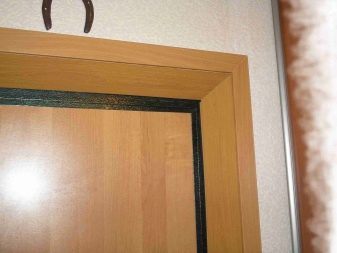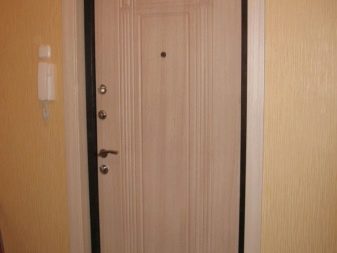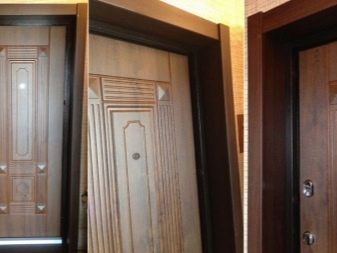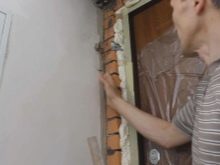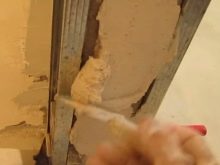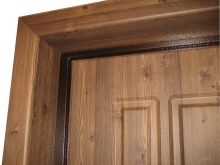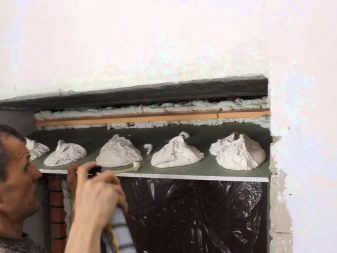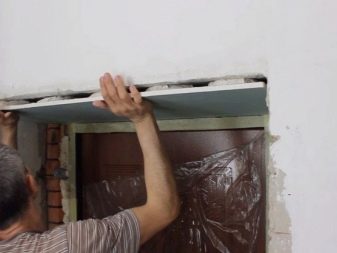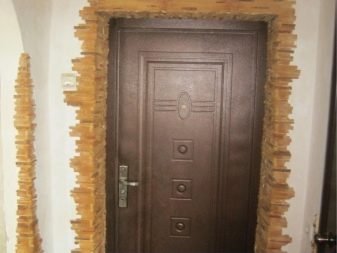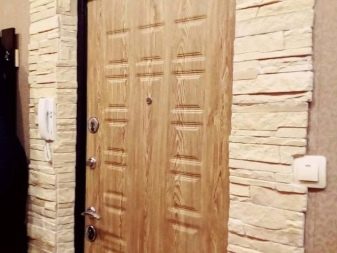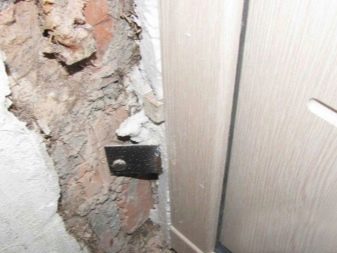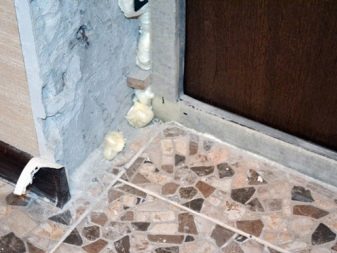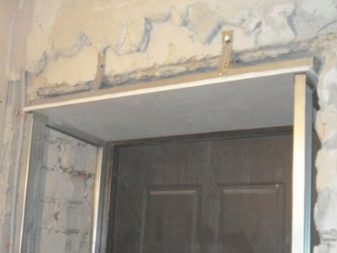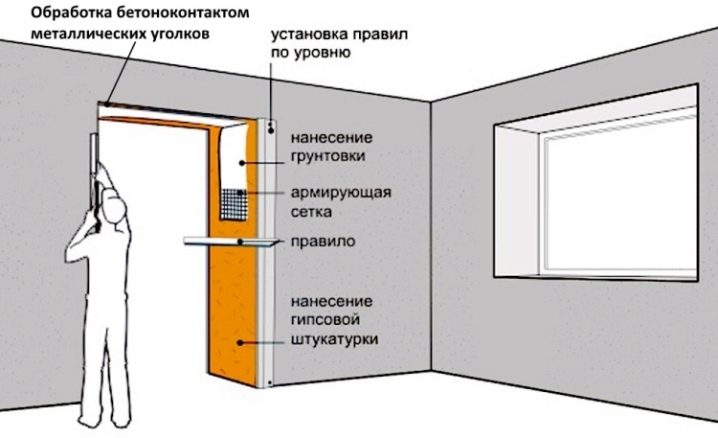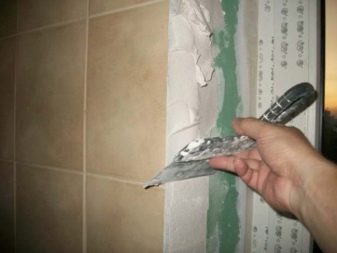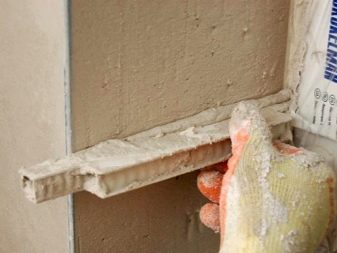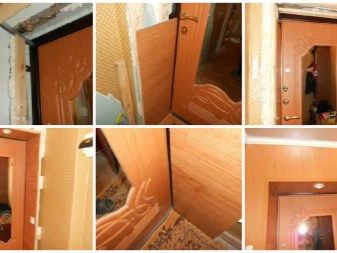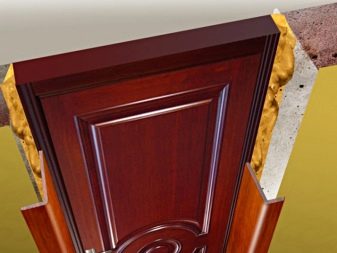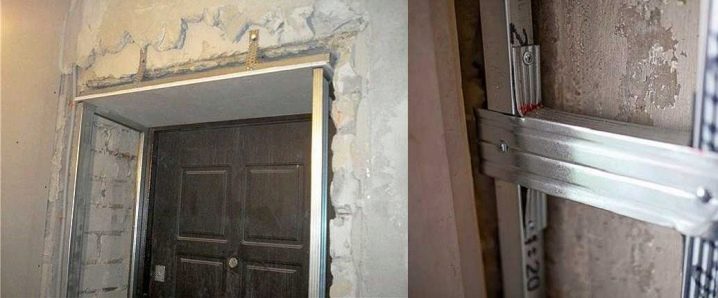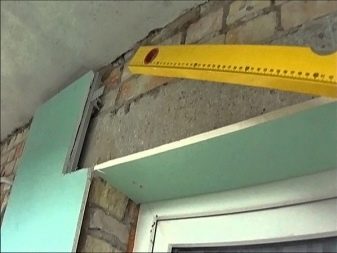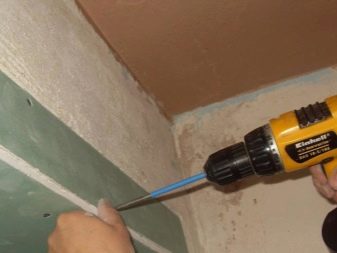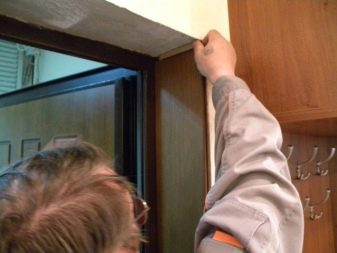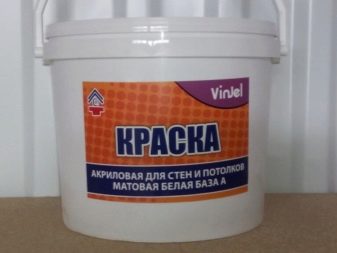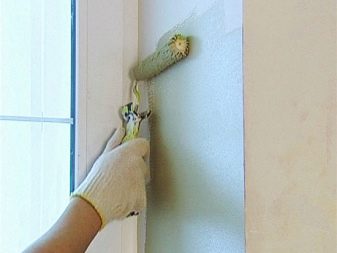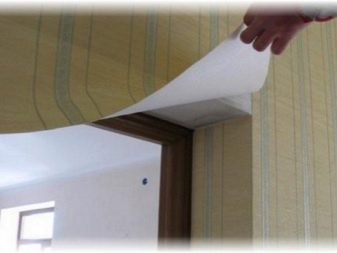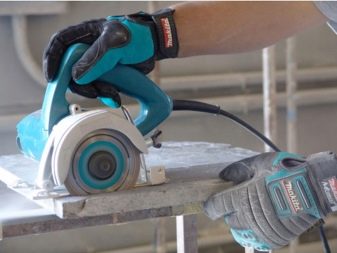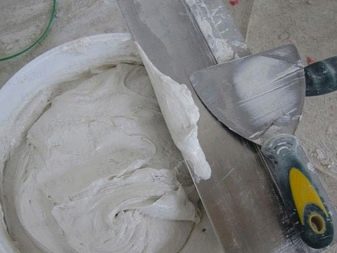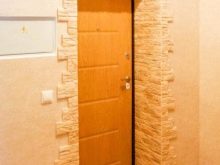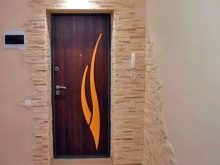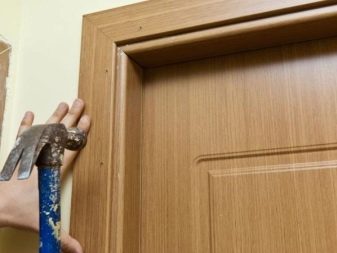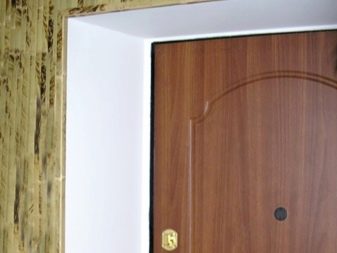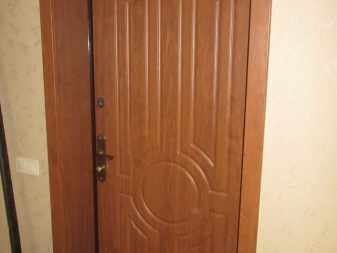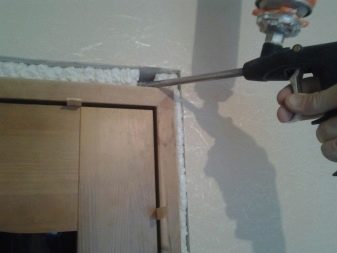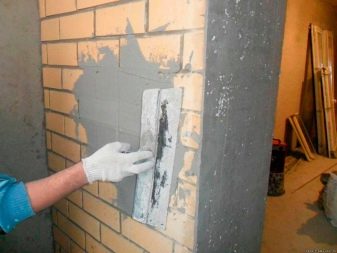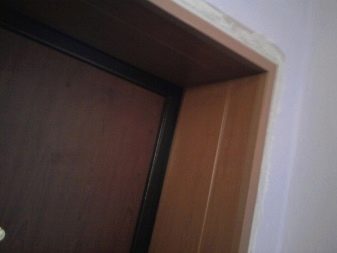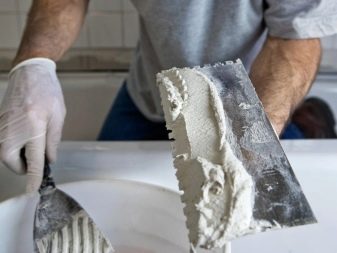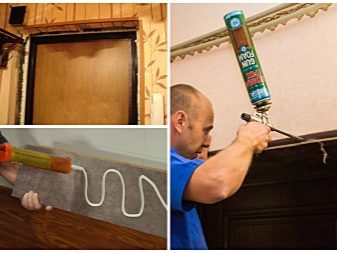How to properly trim the door slopes?
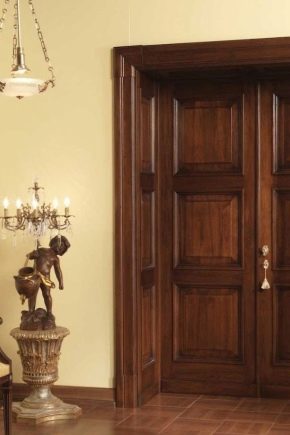
Professionals managed to bring the installation technology of windows and doors to perfection. Particular attention in this work is given to the slopes, which are an essential element. According to the current terminology slopes are called wall surfaces around the door.
Special features
After installing the door you want to relax, but the most crucial stage is just ahead. After installing the product in the opening, it turns out that the door slopes look, poorly said, ugly, can spoil the first impression and the joy of replacing the door. A very reasonable question arises, and how can walls be made up so that they look attractive?
The most popular options are to plaster, and then paint or close the space with laminate. Both options are practical, but in working with laminate will have to crate. If there is no experience at all in carrying out construction work, and you want to spend a small amount, then plaster remains the most attractive option.
There are several reasons why you should opt for plastering walls. Among the main advantages:
- no need to make a crate, which on the interior doors will take part of the space in the aisle;
- there is no need to involve specialists in the work;
- low material cost;
- spent half the time than in any other case, when making slopes.
But this method has its drawbacks that you should know about:
- it is necessary to additionally paint the slopes;
- from an aesthetic point of view, not the best option.
In working with laminate, you need not only experience, but also patience. Creating crates takes more time, you will need additional tools:
- hammer;
- glue;
- shuropovert.
It is necessary to spend money not only on the purchase of material, but also on dowels, wooden beam, decorative corner and screws. But from the point of view of aesthetics, this is the most attractive design option for door slopes.
Kinds
Slopes can be classified into two large groups, not taking into account the material from which they are made, and the place of installation:
- internal;
- external.
The internal ones bear not only the functional load, but also the aesthetic one, therefore, working with them is especially important.
There are quite a few options for how you can decorate the surface of the walls around the new door, whether it is interroom or entrance. According to the material of execution they are:
- wooden;
- cork;
- plastering;
- drywall;
- plastic.
Depending on what material the slope will be made of, the installation technique is different.
Materials
Underline the new metal door will help trim slopes. Among the most popular materials:
- paint;
- ceramics;
- wallpaper;
- tree;
- drywall;
- a rock;
- laminate;
- PVC;
- MDF.
PVC panels are modern and inexpensive finishing material with aesthetic appeal and reasonable cost.
Device
In places where the entrance door is adjacent to the walls, there is a heat leak, therefore, assembly foam is used around the structure.It helps to quickly close the gaps and achieve the necessary tightness.
Panels are easily mounted on the safe-door, and you will need to purchase corners and trim if simple plastering is not expected.
Such an element makes it possible to close the structure carefully after installation:
- slots;
- foam;
- stitches.
They can be considered as additional protection from drafts, odor outside, noise. If you look at it in section, it looks a bit like a sandwich.
The first layer consists of:
- primer;
- plaster;
- corners;
- finishing finish.
Before applying the primer surface must be prepared. You can use a brush or roller. Sometimes after its application, if it is necessary to insulate the opening, polypolyrole is laid.
Plaster - the easiest way to finish the openings, but you can use drywall, which is superimposed on a previously applied layer of plaster. Be sure to use the level or beacons, because the surface must be flat.
The use of drywall allows you to qualitatively prepare the opening for further finishing. This is a cheap and lightweight material, most often it is used for the installation of interior doors. The cut sheets create a flat surface without unnecessary loss of time; in working with plaster you will need experience and patience. The layer of plaster is best used on the front door, because there the surface of the wall can be exposed to moisture, and drywall does not stand it.
On the edge of the set trim or corner, which acts as a reinforcement for the further application of putty and grout. Be sure to finish with a finishing primer.
The second layer of the slope is a decorative finish, which may be different. Some decide to simply paint the surface, while others use ceramic tiles and even natural stone.
Surface preparation
Before you install the door slopes, you must prepare the surface. The work consists of several sequential actions:
- they remove locks and handles from the door construction, I cover it with a film that is easily attached to a simple adhesive tape, and the floor is covered with a regular cardboard;
- old plaster is removed using a punch;
- construction debris is carried out, freeing up space;
- appearing in the gap fill the mounting foam, before that, experts advise to moisten the surface of the spray with plain water, which improves the adhesion of the material to the surface of the door jamb;
- foam dries after 8-12 hours, after which the excess is removed with a knife;
- the surface is treated with antiseptic impregnation;
- if an electrical cable is provided, then it is worth laying it at this stage;
- You can proceed to plastering or installation of the frame.
DIY assembly
It is not easy to make repairs yourself; you just need to study the issue more closely. If you decide to plaster slopes, then, in addition to a small container for the solution, you need to prepare a construction mixer. Its use guarantees the absence of lumps and uniformity of the applied composition.
It is impossible to do without finishing the level, the length of which must be at least two meters. Plastering is done with spatulas, one should be narrow, the other wide. The primer is easily applied to the surface of the joint with a flat brush.
After the preparatory work, the cut edges of the mounting foam must be sanded using emery paper. The use of a primer is necessary because it provides the best adhesion of the plaster to the surface. Experts recommend applying a primer several times, but only after the first layer is completely dry.
Now you can proceed to plastering the surface. The composition is applied with a thick layer starting from the upper slope of the door. Wooden lath allows you to quickly level and remove excess plaster. The perforated metal profile, pressed into the corners, helps to strengthen them.
The starting layer must be completely dry before applying the finish, which is necessary to hide small irregularities.
Laminate, PVC is mounted on a frame, for which it is first necessary to make a 2x4 cm timber.
The timber is sawn according to the size of the slope, on each part of the doorway it is attached perpendicular to the strip, 4 on each side and three on top. Nails can be used as a fixing element.
You can beat corners only if you bend the plastic panels.From the end, their structure is hollow, there is a void along the entire length, so you can easily make cuts. It is very simple to do this with a simple stationery knife. The cut-out modules are attached to the frame with self-tapping screws, and the bent panels are attached to the wall.
Work should be in the following order:
- mark the border of the finishing elements;
- 5 holes are drilled in the wall, which in the future will be covered by a trim panel;
- wooden plugs are driven into the recesses, into which the screws must be screwed in, thus securing the decoration material to the wall.
Drywall as a building material allows you to quickly finish the slopes.
- At the first stage, it is necessary to drill holes over the entire surface of the opening, the distance between them should be 20 cm. Dowels should be installed in them, where the screws are then not fully screwed in. It is necessary to choose the dimensions of the starting rail, which will play the role of a guide. To do this, you need to measure the three sides of the opening. The upper guide should be across the width of the opening, since the sides of the material will abut the slope from above. The first upper rail is screwed to the wall with screws.
- The sheet of drywall in the next step is cut out on a pre-made markup. If you do not comply with the technology, then the edges will be ragged. Be sure to use a ruler during installation or anything that can replace it. The top layer of paper is cut easily, then the knife is a little more difficult to plunge into the plaster, but you need to ensure that its tip can be seen from the reverse side. If an adhesive mixture is used, on which the drywall will be planted on the wall, then it is important to read the manufacturer's instructions well to keep the proportions.
- The adhesive mass is placed on the back side of the sheet of material, and the dowels are coated. The edges of the strip are introduced into the guide, and the drywall itself is pressed against the base. The same should be done on the sides. Excess glue is removed immediately, as it leads to deformation.
- Be sure to use beacons that allow you to keep the sheet in the same position. If gaps appear between the sheets, you can use excess glue to fill them. Finishing is possible only in a day.
Look good slopes from MDF. Before installation, the surface of the wall should be treated with lime-cement mixture. After it dries, the primer is applied.Before cutting out the material, it is worthwhile to carefully measure the corners of the joints and cut the corners. If you attach elements to each other, there should be no space between them. The first is made the upper part of the opening, which is applied to the adhesive composition. The sheet is supported until it is firmly fixed in place. The second install side parts. Corners can be mounted on liquid nails.
If you want to trim the slopes with paint, then depending on the material you need to choose the composition. Previously the door is removed, impregnation is applied to the wood, if they are varnished, then the stain. For other dyes you can use linseed oil.
You can paste over slopes and any wallpaper, specially created for this product is not. The drawing will not look attractive, therefore it is advised to take monophonic. The technology consists of several stages:
- near the doorway, glue a large sheet of wallpaper, which should close the entrance;
- cut it in a horizontal direction so that the slope can be completely closed;
- using a rag or roller, smooth the material over the surface so that there are no bubbles under it;
- repeat the action on all sides of the opening.
Wet rooms are trimmed with sustainable materials, this also applies to slopes. Stone or ceramic tile is ideal for termination. Before installing the surface must be plastered and leveled. Experts do not advise to pick up heavy tiles, because it will not hold well on the wall. The procedure is as follows:
- material is cut according to the size of the slope using a glass cutter or tile cutter;
- glue is prepared in accordance with the manufacturer's instructions;
- on the surface of the composition is applied using a spatula, which helps evenly distribute it;
- the area of glue should be equal to the area of glued tiles;
- the reverse side of the tile is also covered with the composition;
- material should be pressed a little to the surface, checking the correct position using the level;
- the second and subsequent tiles are installed with a gap of no more than 3 mm, while it must be free of glue, for this it is best to use beacons.
The entire composition under the tile will dry only after 4 days, after which the plastic beacons can be removed and the free space filled with grout.
Tips
Door slopes in the apartment - a great opportunity to experiment with the design. Be sure to consider the purpose of the door, that is, whether it is an entrance door or an interroom one, the purpose of the room, what material the box is made of in the opening.
Some types of materials are not so easy to assemble, they require skills and experience, the availability of tools.
- If you use drywall, tile or wood, you will need to make measurements correctly before installing slopes. The slopes in front of the entrance door should not have free cavities, this will increase the durability and reliability of cladding.
- Wood paneling or plastic trim looks more attractive than painting surfaces. Drywall allows you to hide all the errors. Using this option, you get rid of unnecessary expenses when purchasing materials necessary for leveling walls. This method can rightly be called economical and simple, since the installation can be managed independently.
- Plastic panels are rarely used for the design of doorways, because the material does not withstand physical impact and breaks even with a small blow.This option is never reliable and durable. But wood is a durable and reliable material that will serve for a long time. This finish is suitable for different rooms.
- Finishing work must be carried out taking into account the size of the doorway and the materials used. Thermal insulation is required as an additional installation step for entrance doors, since they must not only be durable, but also not create drafts in the apartment. In working with the entrance door, you need to pay a lot of attention to sealing the holes. Most often for this purpose, an assembly foam is used, which, after application, expands in volume, thereby filling the entire opening, leaving no gaps inside. After complete drying, the excess foam can be easily cut with a simple knife, thus leveling the surface for further decorative finishing.
- The plaster can be used directly on the brickwork or already on the installed MDF panels. If you have to work with it, it is worthwhile to study in more detail the characteristics of the material and the process of its application, since this is one of the most difficult options for finishing the slopes.
- The advantage of perforated corners is difficult to overestimate, since they can significantly reduce the time spent on leveling the surface. The solution falls on them easily, and they themselves are completely hidden from the eyes after applying the plaster.
- It must be remembered that before beginning work on the finishing of slopes, especially if it is an entrance door, it is important to close all spaces. If this is not done, then cold air begins to penetrate into the gaps, which condenses into the wall, wet spots appear on the wall, and later, mold, decorative decoration falls off.
- Surface preparation is important for plastering walls. The work takes a lot of time, but the surface is recommended to be processed in several layers. First, a layer of primer is applied, which improves the adhesion of the plaster to the surface. To achieve a perfectly flat surface, a profile must be applied, fixed with dowels.
- For the manufacture of mortar, you should use cement, sand, lime mortar, you can buy ready-made mixture. The technology of applying to the surface suggests starting from the slopes of the upper region.First, a thick layer of plaster is applied, after which the excess amount is removed. In order to smooth the angles of the slopes, it is recommended to use a perforated profile. It is fixed on the surface of the applied plaster mixture. Only after that the finishing layer is applied, which should be thin. It helps to eliminate irregularities and roughness.
- If working with MDF panels, the base should be made of lime-cement mortar. After drying, it is applied to the surface, pre-treated with a primer. The panels should be divided into three parts, each of which corresponds in size to the side of the doorway. A special glue is applied to the surface, then a panel is installed.
Work on the installation of slopes is performed in strict sequence, if you skip at least one stage, the end result will only disappoint, and the materials will be wasted.
On how to properly trim the door slopes, see the following video:
